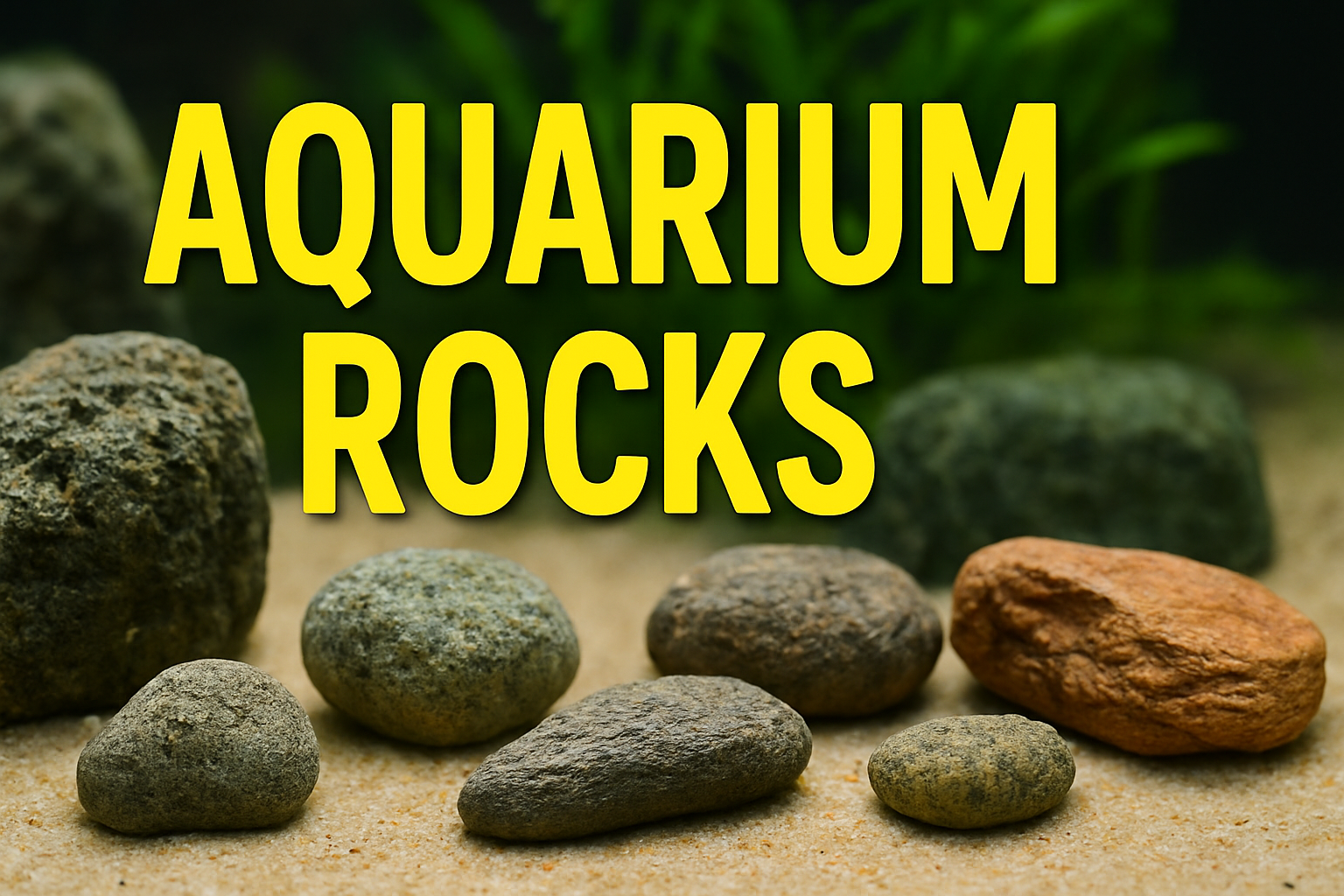Aquarium rocks are more than just decorative elements in a fish tank. They play a vital role in shaping the environment, balancing water chemistry, and enhancing the natural beauty of your aquatic setup. Whether you’re creating a freshwater planted tank, a saltwater reef, or a biotope aquarium, the right selection and placement of rocks can transform your aquarium into a thriving underwater ecosystem.
In this comprehensive guide, we’ll cover everything you need to know about aquarium rocks—types, benefits, safety concerns, placement tips, maintenance, and much more.
Why Aquarium Rocks Are Important
Before diving into the different types of aquarium rocks, it’s essential to understand their significance.
- Aesthetic Appeal – Rocks add texture, depth, and natural beauty to aquariums. They mimic natural riverbeds, reefs, and rocky habitats where fish live in the wild.
- Fish Shelter and Territory – Many fish species use rocks for hiding, breeding, and establishing territories. This reduces stress and encourages natural behavior.
- Water Chemistry Balance – Certain rocks, such as limestone, influence pH and hardness, which can benefit specific fish like African cichlids.
- Support for Plants and Corals – Rocks serve as anchor points for live plants, moss, and corals in both freshwater and saltwater tanks.
- Natural Filtration – Porous rocks harbor beneficial bacteria that help with biological filtration, improving water quality.
Types of Aquarium Rocks
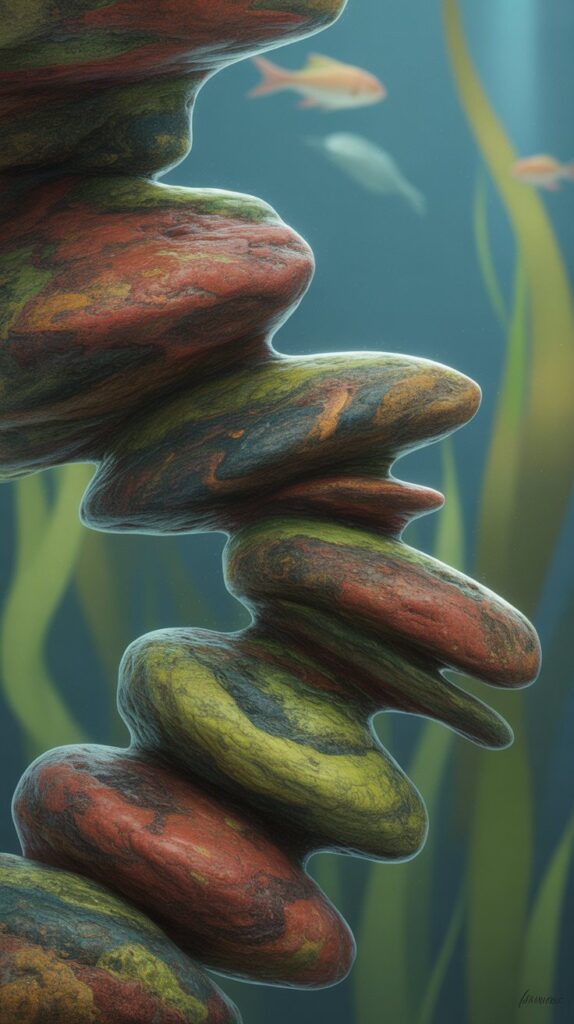
Aquarium rocks come in many varieties, each with unique properties. Choosing the right type depends on your tank setup, water chemistry, and design goals.
1. Lava Rocks
- Lightweight and porous, perfect for colonizing beneficial bacteria.
- Dark color contrasts beautifully with plants and fish.
- Commonly used in both freshwater and saltwater aquariums.
2. Dragon Stone (Ohko Stone)
- A popular aquascaping rock with a rugged, layered texture.
- Great for Iwagumi-style aquascapes.
- Neutral effect on water chemistry.
3. Seiryu Stone
- Famous in aquascaping for its blue-grey tones and striking white veins.
- Slightly raises pH and hardness, suitable for aquascapes with shrimp and hardy fish.
4. Limestone and Texas Holey Rock
- Raises pH and water hardness.
- Ideal for African cichlid tanks.
- Provides natural caves and hiding spots.
5. Slate
- Flat and stackable, making it perfect for caves and ledges.
- Neutral impact on water chemistry.
- Often used for aquascaping and creating terraces.
6. Quartz Rock
- Safe for aquariums, available in many colors.
- Reflects light beautifully in aquascapes.
- Does not affect pH or hardness.
7. River Rocks
- Smooth, rounded stones collected from rivers.
- Natural-looking but must be tested for safety before use.
8. Coral Rocks (Live Rock for Saltwater)
- Rich in calcium carbonate, essential for marine and reef tanks.
- Boosts biological filtration.
- Raises pH, perfect for marine species.
Choosing the Right Aquarium Rocks
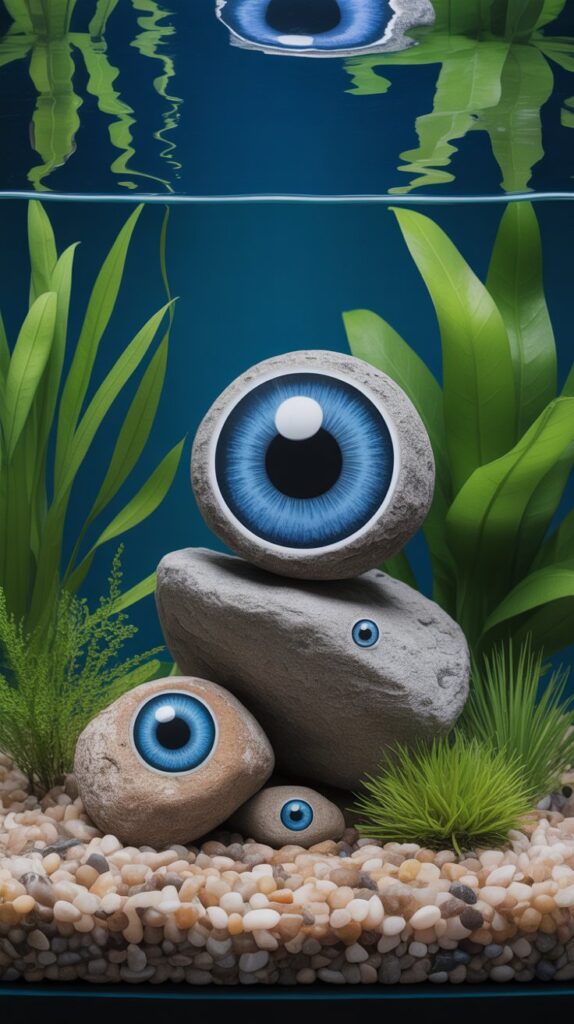
When selecting aquarium rocks, consider these factors:
- Tank Type: Freshwater, saltwater, or planted aquarium.
- Fish Needs: Species like cichlids prefer hard water and rocky caves, while bettas prefer softer, neutral water.
- Water Chemistry: Avoid rocks that alter pH if your fish prefer stable, neutral conditions.
- Safety: Some rocks contain harmful minerals or sharp edges that can injure fish.
- Size and Placement: Rocks should fit proportionally to your tank and not overcrowd the space.
How to Test Rocks for Aquarium Safety
Not all rocks are safe for aquariums. Here are some ways to test:
- Vinegar Test – Pour vinegar on the rock. If it fizzes, it contains calcium carbonate and will raise pH and hardness. Suitable for cichlid tanks, but not for soft-water species.
- Hardness Check – Avoid very soft or crumbly rocks that may dissolve and cloud water.
- Metal Content Test – Steer clear of rocks with metallic veins, as they can leach harmful substances into the water.
Preparing Aquarium Rocks Before Use
To ensure safety, prepare rocks before placing them in your aquarium:
- Rinse Thoroughly – Wash rocks with clean water (no soap or chemicals).
- Scrub with a Brush – Remove dirt, algae, or debris.
- Boil or Bake – Boil rocks for 15–30 minutes (if small enough) to kill pathogens. Large rocks can be baked at low heat.
- Inspect for Sharp Edges – Smooth out rough spots to prevent injuries to fish.
Rock Placement in Aquariums
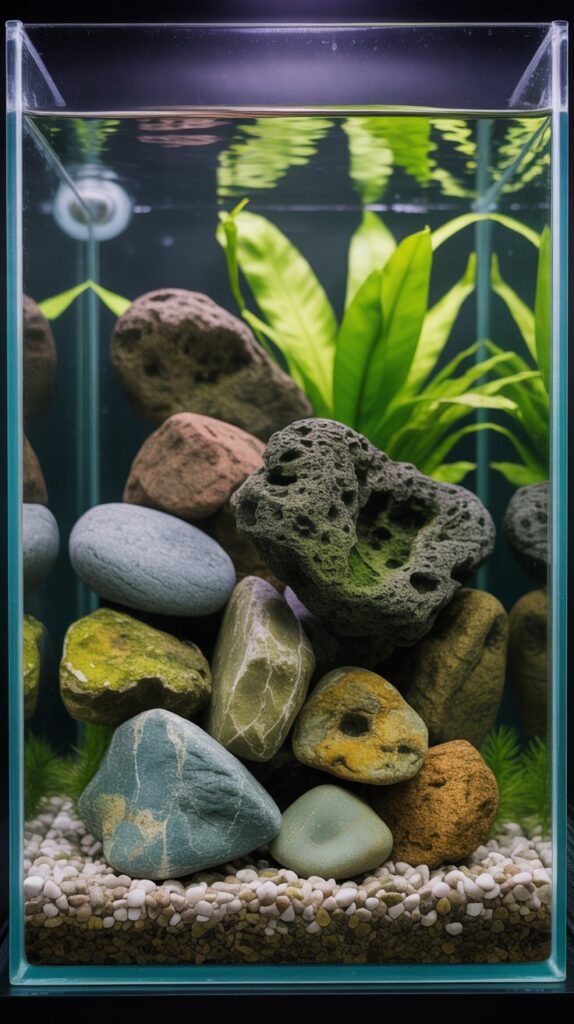
Aquarium design is just as important as rock choice.
- Aquascaping Styles:
- Iwagumi: Minimalist layout using stones as the main focus.
- Nature Aquarium: Rocks combined with driftwood and plants to mimic natural landscapes.
- Cichlid Setup: Rock piles forming caves and shelters.
- Reef Tank: Coral rock structures that support marine life.
- Placement Tips:
- Place larger rocks at the bottom for stability.
- Avoid stacking loosely; use aquarium-safe glue if needed.
- Create hiding places and swim-throughs for fish.
- Leave open areas for swimming space.
Maintenance of Aquarium Rocks
Aquarium rocks require periodic cleaning to prevent algae buildup and maintain aesthetics.
- Routine Cleaning: Scrub rocks with an algae pad during water changes.
- Avoid Soap and Chemicals: Only use clean water and aquarium-safe tools.
- Deep Cleaning: If rocks accumulate excessive algae, remove and soak them in a mild bleach solution (rinse thoroughly afterward).
- Biological Safety: Avoid over-cleaning porous rocks since they harbor beneficial bacteria.
Benefits of Aquarium Rocks
- Improve aquarium aesthetics.
- Provide hiding and breeding spots.
- Support beneficial bacteria.
- Influence water chemistry when needed.
- Anchor plants and corals.
- Reduce fish stress by mimicking natural habitats.
Mistakes to Avoid with Aquarium Rocks
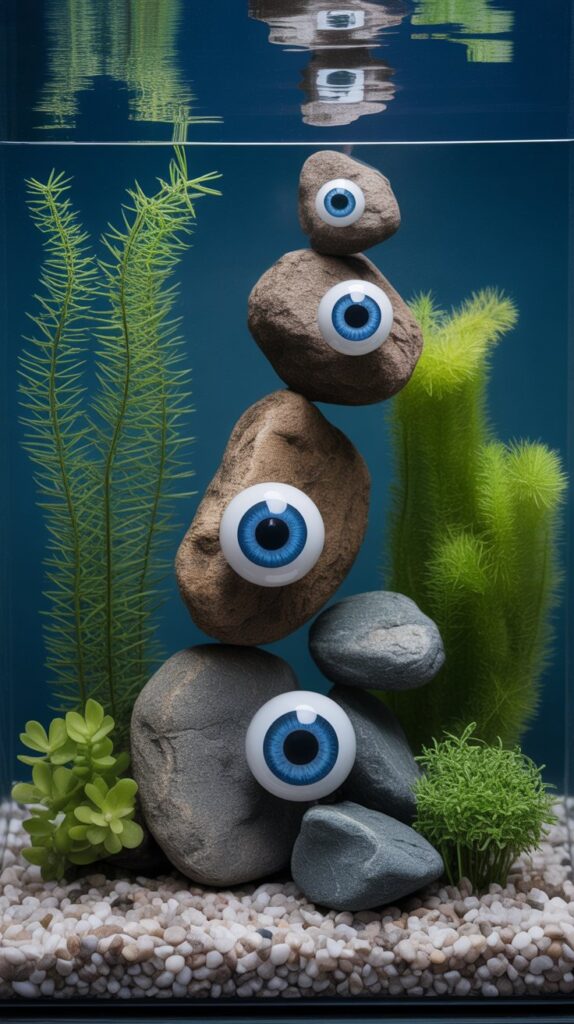
- Using untreated rocks from unknown sources.
- Overcrowding the aquarium with too many rocks.
- Choosing rocks that drastically alter water parameters unsuitable for your fish.
- Placing unstable rock piles that may collapse and injure fish.
- Ignoring routine cleaning and maintenance.
Best Aquarium Rock Combinations
- Freshwater Planted Tank – Dragon stone, lava rock, and Seiryu stone.
- African Cichlid Tank – Limestone, Texas holey rock, and slate caves.
- Saltwater Reef Tank – Live rock, coral rock, and dry reef rock.
- Betta Tank – Smooth river stones with planted decorations.
Conclusion
Aquarium rocks are not just decorative—they are functional, beneficial, and essential for many aquatic setups. By carefully selecting safe, suitable, and aesthetically pleasing rocks, you can create a natural environment that benefits both your fish and plants. Whether you’re building a dramatic aquascape or a practical cichlid habitat, rocks will always be at the core of aquarium design.
FAQs About Aquarium Rocks
1. Can I use any rock in my aquarium?
No, only aquarium-safe rocks should be used. Test for harmful chemicals, sharp edges, and suitability for your fish’s water chemistry.
2. Do aquarium rocks change water pH?
Some rocks, like limestone and coral rock, raise pH and hardness. Others, like slate and lava rock, are neutral.
3. How do I clean aquarium rocks safely?
Scrub with water and an algae brush. For deep cleaning, boil or soak in a mild bleach solution, then rinse thoroughly.
4. Can I collect rocks from nature for my aquarium?
Yes, but ensure they are safe. Test for metal content, calcium carbonate, and contaminants before using.
5. Do rocks harm fish?
Safe, smooth rocks do not harm fish. Avoid sharp, unstable, or contaminated rocks.
6. How many rocks should I put in my aquarium?
It depends on tank size and fish type. Provide enough hiding places but leave open swimming space.
7. Are lava rocks good for aquariums?
Yes, lava rocks are porous, lightweight, and excellent for biological filtration.
8. Do I need rocks in a planted aquarium?
Not necessary, but rocks enhance aquascapes, anchor plants, and provide a natural look.
9. Can aquarium rocks host beneficial bacteria?
Yes, porous rocks like lava and live rock provide surfaces for beneficial bacteria that help filter the tank.
10. Are colored decorative rocks safe?
Only if labeled aquarium-safe. Avoid painted or artificially dyed rocks, as they may leach toxins.

